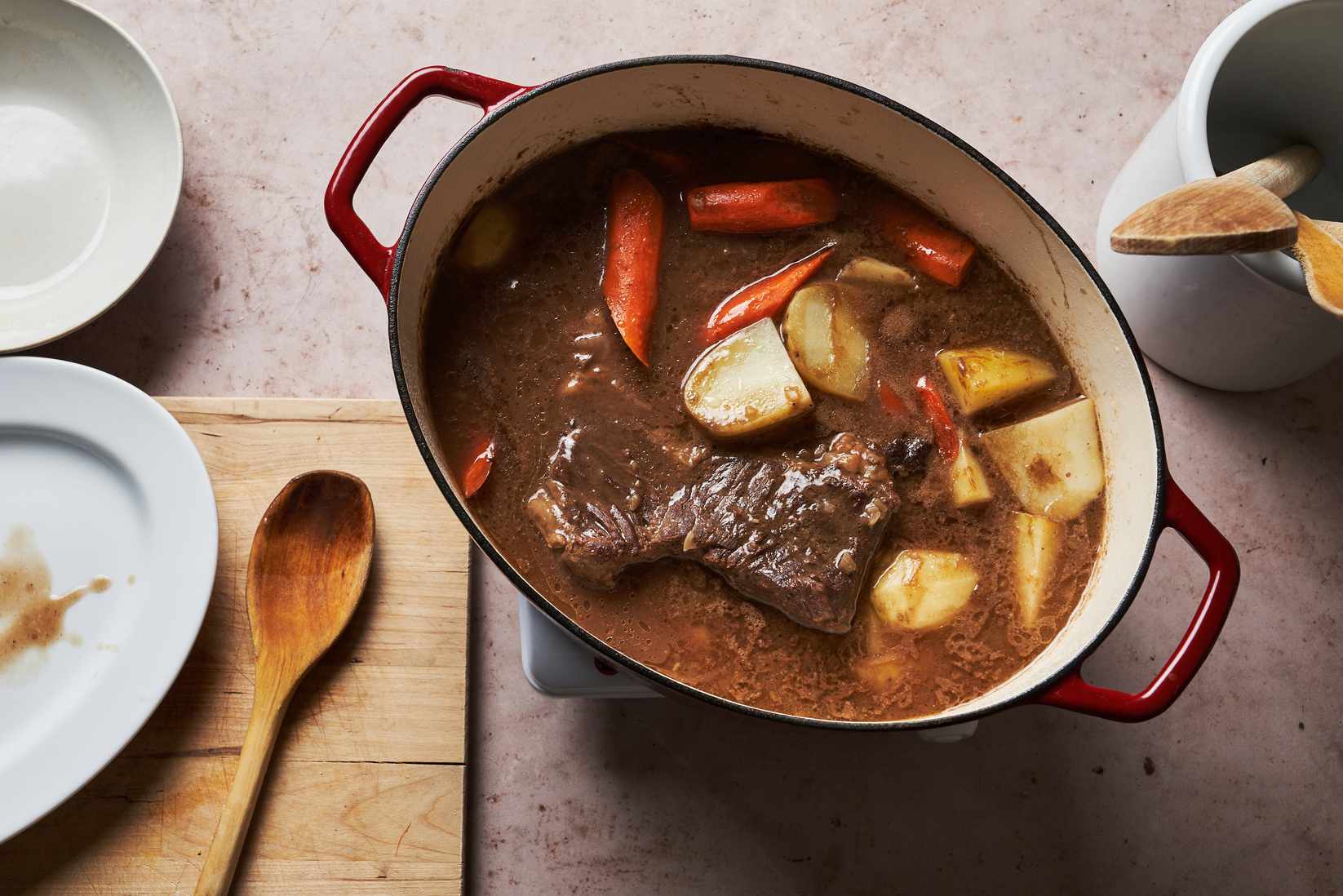Mouthwatering Stove Top Pot Roast Recipe
Introduction:
A stove top pot roast is a delicious and comforting dish that is perfect for a hearty meal. In this blog post, we will guide you through a mouthwatering stove top pot roast recipe. Join us as we explore the ingredients, preparation steps, and cooking techniques required to create a tender and flavorful pot roast right on your stovetop.
I. Selecting the Perfect Cut of Meat
A. Choosing the Right Roast for Stove Top Cooking
When selecting a roast for stove top cooking, it’s important to choose a cut that is suitable for braising. Cuts such as chuck roast, bottom round roast, or brisket work well for stove top pot roast. These cuts have enough marbling and connective tissue to break down during the slow cooking process, resulting in tender and flavorful meat.
B. Identifying the Ideal Marbling and Size
Look for a roast with even marbling throughout the meat. Marbling refers to the small streaks of fat within the muscle fibers, which adds moisture and flavor to the roast. Additionally, consider the size of the roast based on the number of servings you need. A roast weighing around 3-4 pounds is generally suitable for a family-sized pot roast.
II. Ingredients for a Flavorful Pot Roast
A. Essential Ingredients for Seasoning and Cooking
The essential ingredients for a flavorful pot roast include salt, pepper, and oil for seasoning the meat before cooking. Additionally, onions, garlic, and beef broth are essential for braising the roast and creating a flavorful cooking liquid.
B. Additional Ingredients for Enhancing the Flavors
To enhance the flavors of the pot roast, consider adding ingredients such as red wine, Worcestershire sauce, tomato paste, and herbs like thyme, rosemary, or bay leaves. These ingredients add depth and complexity to the cooking liquid, resulting in a rich and flavorful pot roast.
III. Preparing the Pot Roast
A. Seasoning and Tenderizing the Meat
Before cooking the pot roast, season it generously with salt and pepper on all sides. This helps to enhance the flavor of the meat. For additional tenderizing, consider using a meat mallet to gently pound the roast, which helps break down the muscle fibers and promote tenderness.
B. Prepping Vegetables and Aromatics for Added Flavor
Prepare the vegetables and aromatics that will be cooked with the pot roast. Common additions include onions, carrots, celery, and garlic. Chop the vegetables into large chunks to withstand the long cooking process without becoming mushy.
IV. Cooking Techniques for Stove Top Pot Roast
A. Searing the Meat for a Rich Maillard Reaction
To develop a deep, rich flavor in the pot roast, start by searing the meat on all sides in a hot, heavy-bottomed pot or Dutch oven. Searing creates a Maillard reaction, resulting in a flavorful crust on the meat. This step is important for building layers of flavor in the dish.
B. Simmering and Braising for Tender Results
After searing, add the vegetables, aromatics, and any liquid (such as beef broth or red wine) to the pot. Bring the liquid to a simmer, then cover and reduce the heat to low. Allow the pot roast to simmer slowly, low and slow, until the meat becomes tender and easily falls apart. This braising method helps break down the connective tissue in the meat, resulting in a tender and flavorful pot roast.
V. Perfecting the Stove Top Pot Roast
A. Monitoring Cooking Time and Temperature
While cooking, monitor the pot roast’s cooking time and temperature. The roast should reach an internal temperature of around 145-160°F (63-71°C) for medium doneness. However, pot roast is traditionally cooked to a higher internal temperature, around 190-200°F (88-93°C), to achieve the desired tenderness.
B. Adding Finishing Touches and Adjusting Seasonings
Towards the end of the cooking process, taste the cooking liquid and adjust the seasonings as needed. You may want to add more salt, pepper, or herbs to enhance the flavors. Additionally, consider thickening the cooking liquid with a slurry of cornstarch and water to create a rich gravy to serve with the pot roast.
VI. Serving and Enjoying the Stove Top Pot Roast
A. Recommended Side Dishes and Accompaniments
Stove top pot roast pairs well with a variety of side dishes. Traditional options include mashed potatoes, roasted vegetables, or buttered noodles. Additionally, consider serving the pot roast with a side of crusty bread to soak up the flavorful juices.
B. Tips for Leftover Pot Roast and Creative Uses
If you have leftovers, pot roast can be used in various creative ways. Shred the meat and use it in sandwiches, tacos, or wraps. Alternatively, repurpose the leftovers into a hearty stew or soup by adding additional vegetables and broth. The tender and flavorful meat is versatile and can be enjoyed in a variety of dishes.
Conclusion:
With this stove top pot roast recipe, you can create a delectable and satisfying meal with tender meat and rich flavors. By carefully selecting the right cut of meat, using quality ingredients, and employing the proper cooking techniques, you’ll achieve a delicious pot roast that will impress family and friends. So, grab your apron, gather the ingredients, and embark on a culinary journey filled with savory aromas and mouthwatering flavors. Enjoy the comforting and delightful experience of a perfectly cooked stove top pot roast.
